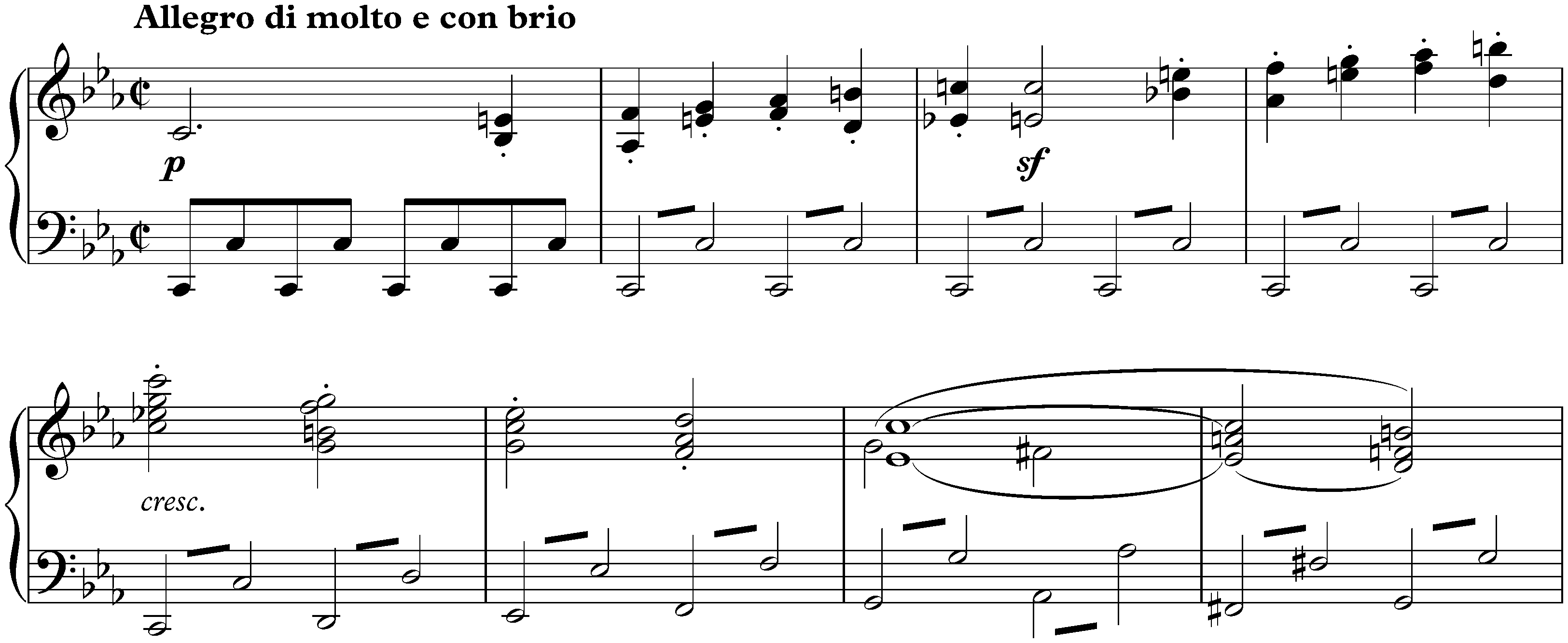Back to About
The website uses a difficulty scale that ranks pieces in half-points from 1 to 5. It is impossible to design any kind of truly authoritative or perfect scale, and it is unrealistic to expect this. The breadth of the piano repertoire and the diversity amongst pianists cannot be captured in such a simplified way. For every difficulty rating or opinion, there will be a pianist who disagrees.
I cannot emphasise enough that the purpose of providing difficulty ratings is solely for a quick, approximate starting point for anyone who is unfamiliar with the music. A small number of people are overly obsessed with the issue of difficulty, such as wanting to rank and compare pieces, or ask about the five most difficult works, as if difficulty is scientifically measurable and the only detail that matters. This only detracts from what is actually important when playing or listening to music. I strongly advise against focusing on difficulty in this way, and am sure the vast majority of serious musicians would advise so too.
The scale is intended purely as a very rough guide, and I hope that the benefits of including even a crude indication outweigh including nothing at all. Ultimately, though, there is absolutely no alternative to sitting at the piano and playing through a piece. If it cannot be read slowly at sight, it is likely not an appropriate piece to choose to learn.
For reference, difficulty 3 is comparable to Associated Board of the Royal Schools of Music Grade 8, Royal Conservatory of Music Grade 10, and Level 5 in the difficulty ratings by Rolf Koenen for Henle Verlag. Some examples of caveats are given below; and then, to provide an illustration of the difficulty scale, each rating is demonstrated with a corresponding Beethoven sonata or sonatina movement of that difficulty.
Musical maturity
Very often, the real difficulty in learning a piece is not a technical one, but an interpretational one: the piano keys themselves might be straightforward to press, yet playing the music well is much more demanding. Good examples are Schubert’s final sonata (D 960) and the first movement of Beethoven’s sonata no. 14 (op. 27 no.2). Properly quantifying this in a difficulty rating is impossible: after all, Artur Schnabel famously described the Mozart sonatas as being ‘too simple for children, too difficult for artists’.
Duration
Even though Handel’s gigue from HWV 437 and chaconne from HWV 442 both have difficulty 2.5, the chaconne lasts about fifteen times longer and requires substantially more effort to learn. This is not because any part of the chaconne is more difficult than the fugue, but rather that there is simply much more of it to learn. For this reason, it is important to consider durations alongside difficulty ratings. However, a long piece does not necessarily sustain its difficulty throughout: many of Bach’s Goldberg Variations, for instance, are much easier than difficulty 4.5. Similarly, splitting a work into smaller sections artificially reduces the average difficulty level: the pieces from Messiaen’s Vingt Regards sur l’Enfant-Jésus are rated between 3.5 and 5, but if taken as a whole would be rated 5 and as one of the most difficult collections on the entire website.
Tempo
At more usual tempi, Scarlatti’s sonata in D minor (K. 141) is reasonably difficult to play, but becomes much more so when played as fast as some pianists choose to. In the same way, even the most difficult pieces can become manageable when taken sufficiently slowly. The difficulty ratings assume a typical tempo at neither extreme.
Hand shape
Pieces that suit one hand shape might well be uncomfortable for another. As an example, smaller hands make Rachmaninoff’s Variations on a Theme of Chopin even more difficult, but could be an advantage in the tight, overlapping thirds of Debussy’s Les tierces alternées. For young pianists whose hands even struggle to span an octave, pieces with extended octave passages can be incredibly difficult or even impossible to play effectively.
Notation and memorisation
Pieces that are chromatically more adventurous, such as Scriabin’s trois études (op. 65) and Schoenberg’s suite (op. 25), with accidentals spread all over the page, become even more difficult to read. This is an obvious and significant barrier when sight-reading and learning a piece, but diminishes somewhat as the piece is memorised, even if the memorisation process naturally takes longer.
Style
The piano repertoire covers many centuries of music and endless styles within these. Comparing fairly a Bach fugue to a Beethoven sonata, or a Brahms intermezzo to a Ligeti étude, is exceedingly challenging. A related problem is with pianists who have relatively little formal training or experience: whilst a decent attempt can be made at a Chopin nocturne where the pedal can mask imperfections, a Mozart sonata unflatteringly highlights all of these.
Subjectivity
Finally, all such assessments can only be personal. Some pianists might have a strong physical stamina, but struggle with differentiating contrapuntal voices. Others might have an effective soft touch, but find complicated rhythms demanding. What comes easily to one pianist will be a hurdle to another pianist. There is no such thing as an objective or fundamentally correct difficulty scale, rather only personal, biased and inconsistent approximations.









Copyright © 2016–2024 www.pianolibrary.org